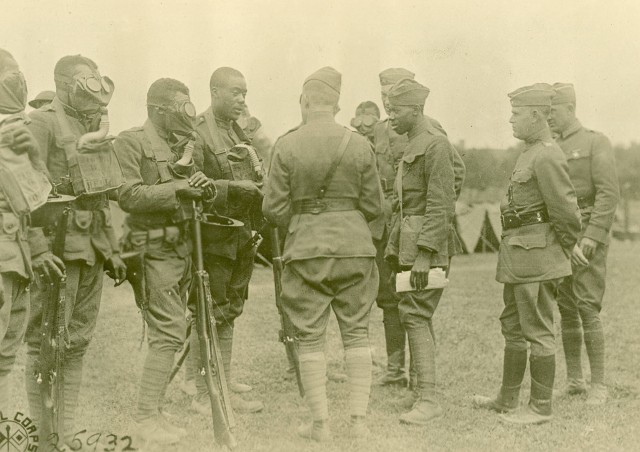This final week of February marks the end of this yearAca,!a,,cs celebration of Black History Month. It is a good time for pausing to remember these Americans with a long history of taking up arms in defense of freedom and democracy. Their service was characterized with courageous devotion to a nation which had not always acknowledged them as citizens and equals, and in whose interests and prosperity they had sometimes had less at stake. Such service marks them as willing patriots.
This was the case during World War I. By the opening of the conflict, Black Americans had made significant strides fighting for their right to serve alongside their fellow white citizens, yet there was still a long way to go.
At the outset of the war, Black Americans who volunteered for service were met with rejection in great numbers. Black enlistments were openly discouraged after the four existing Black Regular Army Regiments were brought up to full strength.
The Selective Service Act, which required all young men regardless of race to register for the Draft, offered a new opportunity. This Act created a new component of the Army containing conscript divisions labeled Aca,!A"National Army Divisions.Aca,!A?
Immediately, the War Department realized that the racially blind Draft would deliver far larger numbers of Black soldiers to the ranks. The War Department was satisfied to relegate these conscript Aca,!A"Colored SoldiersAca,!A? to labor tasks as stevedores, drivers, and members of Service (Labor) Battalions. The Regular 24th and 25th Infantry Regiments and 9th and 10th Cavalry Regiments, moreover, were kept on duty in the American West and the Philippines and not sent to any active war zone. The highest-ranking African-American officer on active duty, Lieutenant Colonel Charles Young, was suddenly declared physically unfit for continued service and summarily retired.
Even given these setbacks, Black leaders viewed military service and especially combat service as a vehicle through which full participation in American society could be achieved. After considerable pressure from civil rights activists, the War Department finally assented to raise two Black Combat Divisions, the 92nd and 93rd.
There were many stories of gallantry from the men who served with these divisions, but the following two vignettes serve to illuminate their contributions to the United States with the American Expeditionary Force in France.
During the Oise-Aisne Operation, Sergeant Henry Johnson and Private Needham Roberts, 369th Infantry of the 93rd Division, were the first A.E.F. recipients of the French Croix de Guerre for bravery. On May 14, 1918, a German raiding party wounded both men, while they attempted to take Roberts prisoner. Johnson fought with his rifle butt and bolo knife to free him. They killed four Germans and wounded several others. A posthumous Distinguished Service Cross was awarded to Henry Johnson in 2003. (For a fuller account of their service, please see Aca,!A"This Week in Army History,Aca,!A? May 11, 2008.)
Corporal Freddie Stowers of the 371st Infantry, also of the 93rd Division, led a squad against a strong German position on September 28, 1918, and although mortally wounded, he urged his men on to defeat the Germans. His commanding officer recommended Corporal Stowers for the Medal of Honor. It was presented posthumously in 1991.
Although many influences were brought to bear upon Black Americans to entice them to evade their duty to their country and although legitimate reasons why the Black man should not serve in World War I were in profusion, they did not succumb to these circumstances. Instead, as in past and future wars, they chose to serve. Courageous and committed service was rendered. Great contributions were offered, and history was made by these Willing Patriots.
ABOUT THIS STORY: Many of the sources presented in this article are among 400,000 books, 1.7 million photos and 12.5 million manuscripts available for study through the U.S. Army Military History Institute (MHI). The artifacts shown are among nearly 50,000 items of the Army Heritage Museum (AHM) collections. MHI and AHM are part of the: Army Heritage and Education Center (AHEC), 950 Soldiers Drive, Carlisle, PA, 17013-5021.
Related Links:
A Working Bibliography of MHI Sources: BLACK AMERICANS & WWI








Social Sharing